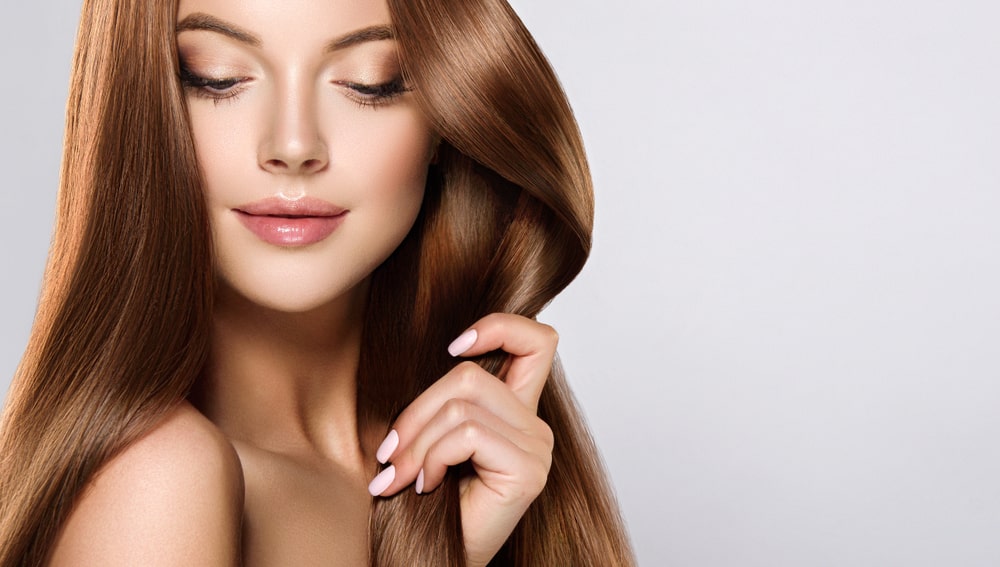Table of Contents
Definition of Hair care products?
Hair care products called shampoo are used to remove various contaminants that progressively accumulate in hair, such as oils, dirt, skin particles, dandruff, and pollutants from the environment. The intention is to eliminate any undesired accumulation while avoiding excessive thinning that could lead to unmanageable hair.
Classification of hair care products
Those that work purely by physical mechanisms
Shampoos: Conditioning shampoos, powder shampoos, clear liquid shampoos, liquid cream shampoos, cream shampoos, jelly shampoos, aerosol foam shampoos, and medicated shampoos such as anti-dandruff shampoos.
Hair conditioners: Rinse off and leave on hair conditioning products.
Examples
Hair creams: o/w type and w/o type of emulsions
Hair sprays or hair lacquers: Aerosol and non-aerosol sprays
Hair sets: Hair setting lotions, aerosol lotions, aerosol foams (mousses)
Hair dressings: Brilliantine gels, brilliantine liquids, emulsion creams (o/w and w/o), aerosol foams (mousses).
Hair tonics: Hair oils
Hair packs: Henna pack, protein-rich hair mask etc.
Non-greasy gels: Hair styling gels.
Those that bring about chemical changes in or on the hair
Permanent waving preparations (Roller or pin curl types)
Hair-straightening preparations (Thioglycollate creams, caustic lye creams, press oils, and gels).
Permanent hair colorants: Based on the permanency of the new color, the following hair coloring product types are available on the market today: temporary colorants, semi-permanent dyeing systems, natural dyes, and permanent dyes, as well as hair bleaches.
Conditioning shampoos
Definition of conditioning shampoos
A shampoo is basically a solution of surfactants modified by additives to make it easier to apply on the hair to clean and to safeguard against deterioration of the normal function of hair after the shampoo has been rinsed away.
DEFINITION: Conditioning shampoos are intended primarily to cleanse the hair (and scalp) and secondarily to improve manageability and promote the desired feel & appearance of wet hair attributes (i.e. hair softness and ease of wet[1]combing), and dry hair attributes (i.e. good cleansing efficacy, long-lasting moisturized feel, easy combing and manageability without greasy feel).
FORMULATION OF CONDITIONING SHAMPOOS
Basic Ingredients Used
- Surfactants,
- Foam boosters and foam stabilizers,
- Conditioning agents,
- Opacifiers and clarifying agents,
- Preservatives,
- Sequestering agents,
- Viscosity modifiers,
- pH buffers,
- Fragrances,
- Coloring agents,
- Functional additives for scalp health, including anti-dandruff additives
- Surfactants: Sodium lauryl sulfate Ammonium lauryl sulfate Cetyl alcohol, stearyl alcohol, etc.
- Foam Boosters And Foam Stabilizers: lauroyl diethanolamine, lauroyl monoethanolamide
- Conditioning Agents: Merquats (a type of cationic surfactant, Merquat 100, Polyquaternium-280) and humectants, such as glycerin, proteins, silicones, dimethicone, lanolin, etc.
- Opacifiers And Clarifying Agents: Ex: polyglycerol esters, latex opacifiers, glycerol stearate, stearyl and cetyl alcohol, etc.
- Preservatives: These are required to preserve the shampoo formulation against bacteria, mold, or contamination. Ex: Methyl parabens, propyl parabens, formaldehyde, methyl, propyl, and hydroxy benzoates, etc.
- Sequestering Agents: Also known as chelating agents contribute to the stability of the product by binding to metal ions. Ex: Citric acid, EDTA (ethylene diamine tetra acetic acid), hydroxyethane, and diphosphonic acid.
- Viscosity Modifiers: These are also called thickening agents that can increase the viscosity of shampoos. Ex: Xanthan gum and guar gum; cellulose and its derivatives, such as hydroxyethyl cellulose; hydrophilic clays, such as hectorites, bentonites, and magnesium aluminum silicates.
- Ph Buffers: These are used in the formulation to adjust the pH of products 38 Salts: Sodium citrate, sodium lactate, sodium hydrogen phosphate, etc. Acids: Citric acid, phosphoric acid, glycolic acid, lactic acid, etc.
- Fragrances: Fragrances are natural or synthetic compounds with a characteristic smell that are added to shampoo formulations to increase product acceptance and mask the natural smell of the ingredients. Ex: essential oils obtained from different parts of flowers, fruits, roots, leaves, and seeds. Synthetic fragrance components such as linalool and citronellol etc.
- Coloring Agents: Cosmetics colorants include anionic dyes and natural colorants, true lakes, iron oxides, chromium oxide, titanium dioxide, zinc oxide, caramel, etc.
- Functional Additives: These are additional ingredients that promote good condition of the hair, and scalp health.
Applications Of Conditioning Shampoo
- These are used to cleanse the hair and scalp.
- Used to remove dirt and grime without stripping away too much of the natural sebum.
- These are used to condition the hair and keep it shiny and healthy.
- Improved combability,
- Enhance shine,
- Smoothness and
- Manageability of hair.
- Provide tangle-free wet and dry combing.
- Reduction in problems during combing and brushing dry hair.
- Improved gloss or luster.
- Improves texture of damaged hair
- Seal the cuticle and restore hydrophobicity.
Mechanism of action of conditioning shampoo
- Conditioning shampoo formulations contain surfactants and conditioning agents as additional components along with other essential ingredients.
- Examples of conditioners usually used are cationic polymers such as various quaternary amines, silicone polymers, lubricants, hydrolyzed collagen, etc.
- Anionic surfactants (including non-ionic surfactants) play the major role of cleaning, foaming, foam stabilization, or synergistic thickening.
- During the cleansing action of the shampoo, anionic surfactants remove the protective layer of natural oil that surrounds the hair which usually needs to be replenished.
- Stripping the hair of its oil coating can leave it tangled, looking dull, and feeling dry
- Concurrently during cleansing action, cationic surfactants present in the formulation are able to coat the hair, as their positive charge is attracted to the electronegative surface of the hair strand.
- This coating leaves the hair softer, lustrous, and manageable. Additionally, make the hair reflect light more uniformly and thereby appear more glossy.
- Consequently, it enables the hair to slide past one another more easily, making them easier to comb.
FORMULA OF CONDITIONING SHAMPOO
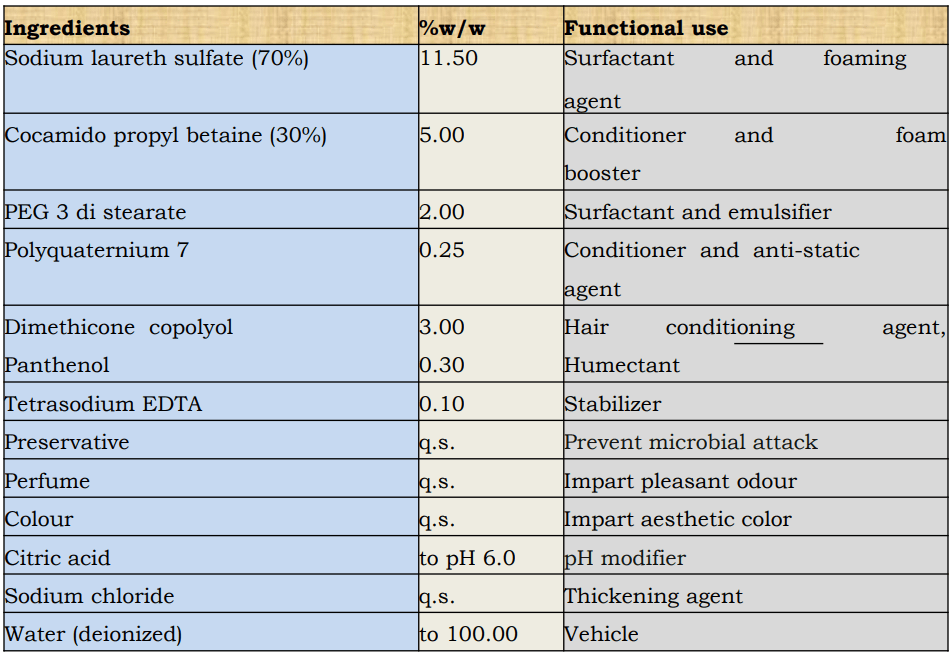
Hair Conditioners (Post-Shampoo Hair Products)
- These are personal care products designed to repair chemical and environmental damage, replace natural lipids removed by shampooing, and facilitate managing and styling of hair.
- Conditioners are usually applied to the hair after shampooing and are designed to smooth the hair and improve gloss and luster.
- Presently, some manufacturers also produce two-in-one shampoo and conditioner formulations.
- The effect of a conditioner is purely cosmetic, and it does not have any medical benefits. The main functions of conditioners are as follows;
Uses of conditioning shampoo
- Improved combability,
- enhance shine,
- smoothness and
- manageability of hair.
- Provide tangle-free wet and dry combing.
- Reduction in problems during combing and brushing dry hair.
- Improved gloss or luster.
- Improved body or volume.
- Improves texture of damaged hair
- Seal the cuticle and restore hydrophobicity
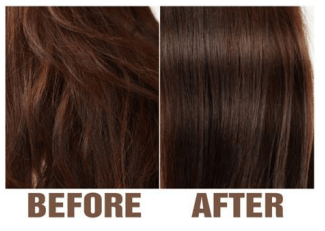
Clear leave on HAIR CONDITIONER

HAIR CONDITIONING CREAM
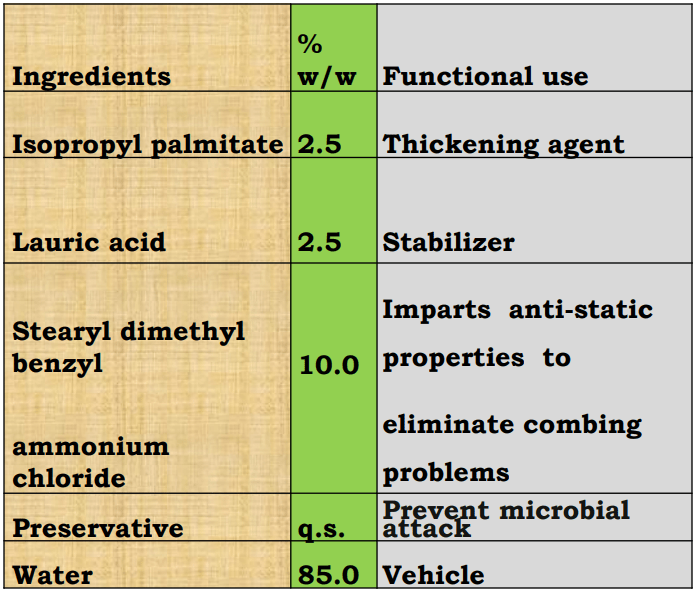
ANTI-DANDRUFF SHAMPOOS
Definition of anti-dandruff shampoos
- Anti-dandruff shampoo is a medicated shampoo containing active ingredients for the prevention and treatment of dandruff, a scalp disorder that manifests itself as scaly flakes of scalp skin.
- they reduce abnormal scalp flaking, decrease the rate of cell turnover, and also have an antimicrobial effect.
- Anti-dandruff shampoo significantly reduces the incidence and morphological characteristics of the desquamation of the scalp.
- These medicated shampoos generally contain any one of a number of active ingredients, which function through very different mechanisms.
- Commonly used active ingredients and also official in the pharmacopeias include zinc pyrithione, ketoconazole, selenium sulfide, coal tar, salicylic acid, and sulfur.
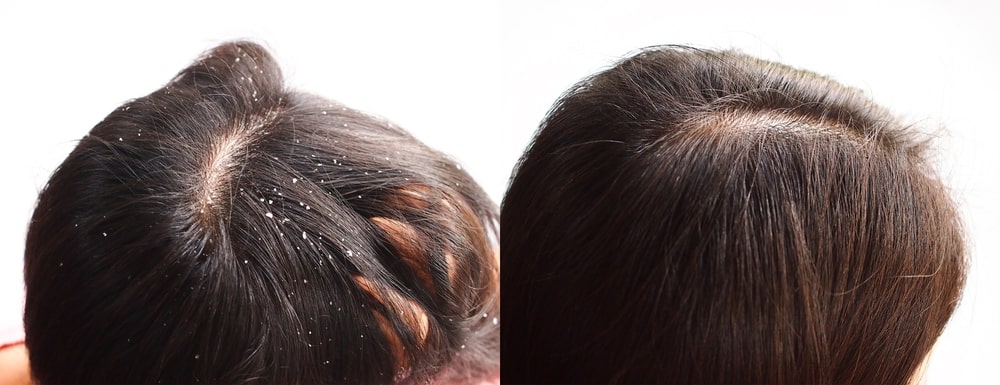
Zinc pyrithione: Zinc pyrithione slows down cell turnover and is an effective antifungal ingredient. This mainly inhibits the development of microorganisms, especially specific fungus species, on the human scalp.
Ketoconazole: It is also an antifungal ingredient, which controls flaking and itching. Medicated shampoo containing ketoconazole (2%) is designed to treat fungal infections Ketoconazole can help treat dandruff by reducing the fungus and inflammation.
Salicylic acid and sulfur: Both have a keratolytic effect, as they dissolve the keratin of dead cells and thus prevent the formation of visible flakes. In addition, sulfur has antimicrobial properties.
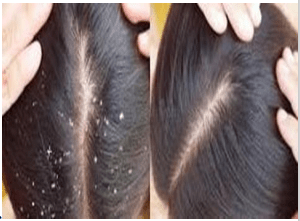
Selenium sulfide: It is another well-known effective anti-dandruff and anti-seborrheic agent plus a non-dandruff control shampoo. It is an anti-infective agent, that relieves itching and flaking of the scalp.
Coal tar: Coal tar belongs to a class of drugs known as keratoplastics. It works by causing the skin to shed dead cells from its top layer slows down the rate of epidermal turnover and also has antiseptic activity.
Anti-dandruff shampoo
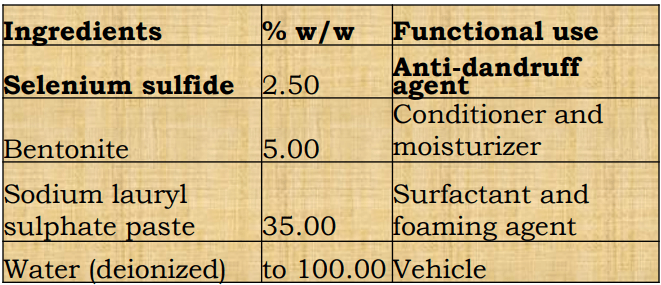
Anti-dandruff cream shampoo
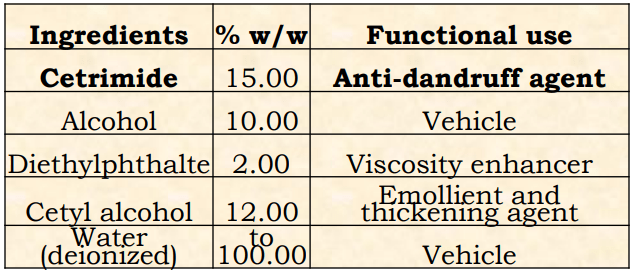
HAIR OILS
- These are leave-on hair care products containing either silicones plus a small amount of plant oils or plant oils plus hydrocarbons intended to repair and strengthen hair, lubricating, providing smooth texture, and adding life and volume to the hair.
- They protect hair from damage caused by many factors including blow dryers and other thermal styling techniques and maintain health and quality of hair.
- These are generally applied to the scalp by massaging that helps to stimulate blood circulation to the hair follicles, while the tonic moisturizers present in the formulation help to condition the hair.

HAIR OIL (HIGHLY LUBRICATING WITH SILICONES)
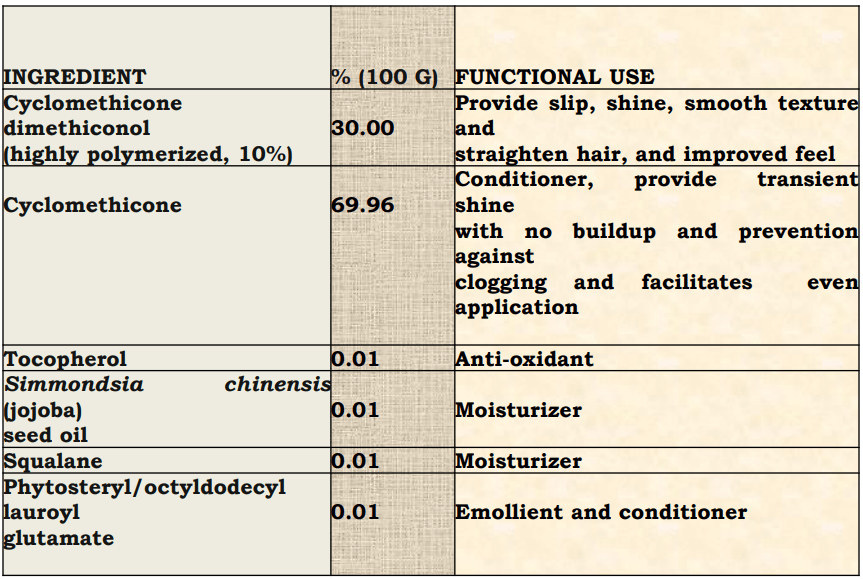
Description
- The above formulation is hair finishing oil consisting of only silicones and oils that give lubricating and smooth textures.
- It contains highly polymerized dimethicone, dimethyl cyclo penta siloxane (cyclo methicone), and small amounts of vegetable jojoba oil.
- The sensory characteristics of silicones are determined by the molecular weight of methyl polysiloxane.
- High polymerization reduces oiliness and enhances lubrication.

Make sure you also check our other amazing Article on: Calibration Of Measuring Glassware
